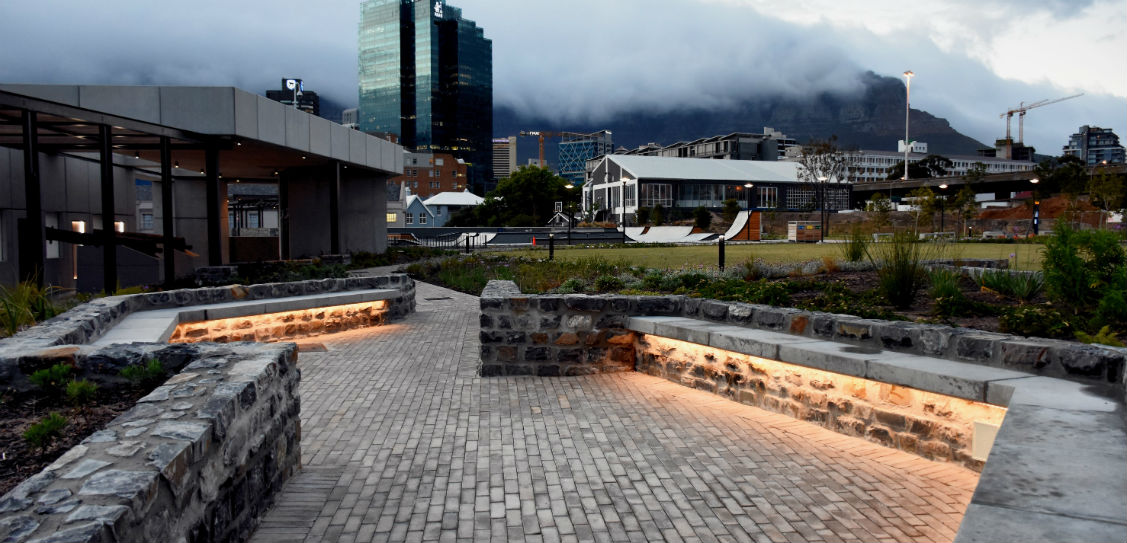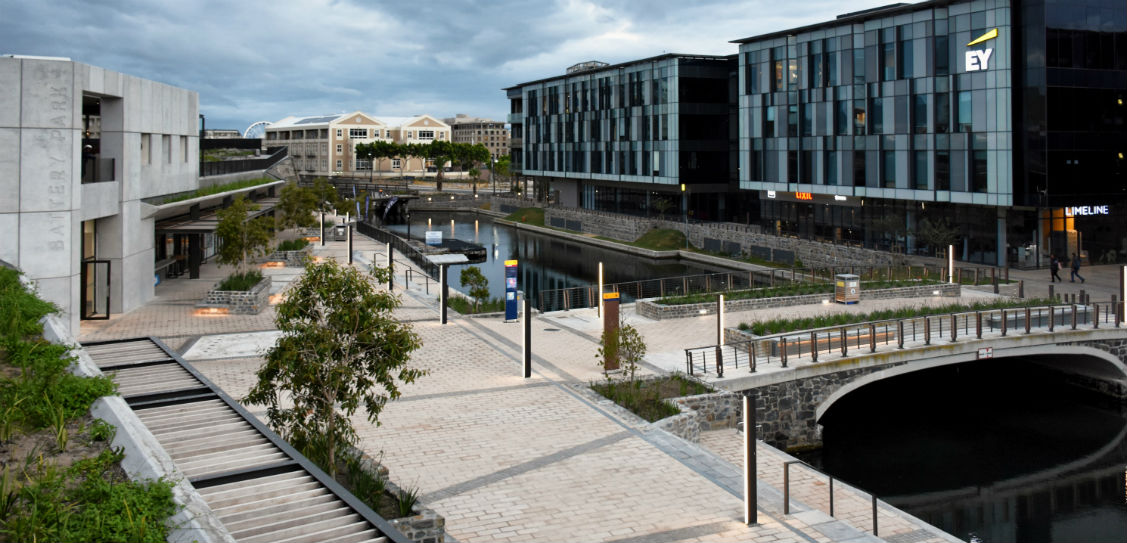Battery Park is a new 12 000 sqm (1.2 hecatre) urban park at one of Africa’s most visited tourist destinations, the V&A Waterfront in Cape Town, South Africa.
Developed as the nucleus of a larger urban vision for the district, the site includes a park and piazza as well as new pedestrian routes. The site is of archaeological importance as it contains the remnants of one of the city’s oldest structures, a coastal fortification called the Amsterdam Battery.
It was built by the Dutch along Cape Town’s coastline in 1784 to defend the city from attack. In the 1800s the building housed prisoners and was later remodelled by the British but eventually abandoned. In 1905 the battery was largely demolished, leaving behind only parts of curved walls.
The setting provided a unique opportunity for architecture and urban design firm dhk to pay homage to the historic landmark while incorporating a parking facility and providing spaces for leisure and recreational activities. The project forms part of an urban design framework created by dhk for the V&A’s previously underutilised Canal District.
Director at dhk and lead architect on the project Pierre Swanepoel said: “The intention was to facilitate a new hub of activity within the V&A district while being respectful to the heritage of the Amsterdam Battery, once a place of exclusion and incarceration, but now a public space designed to support and engage the greater Cape Town community.”
The park lies at the nexus many new pedestrian routes stitching the new district into the surrounding urban fabric and helping to invigorate the area. The raised park has been kept at the battery’s original inner courtyard level while planted edges above retail units on the piazza represent the estimated natural ground level that fronted the battery.
Architectural and landscaped elements reflect the structure’s original footprint, such as semi-circular curved pathways, concrete additions to the rear ramparts, splayed canal-facing walls and concrete-clad structures - giving visitors an authentic sense of the battery’s former size.
On the elevated park level, visitors can explore landscaped gardens with trees and stone-clad planters, meandering walkways with built-in benches, a concrete skatepark, basketball court and new pedestrian routes. Throughout the park and piazza cantilevered steel pergolas scale the design and provide much-needed shade.
The lower piazza level contains 11 boutique retail units that line the splayed canal-facing walls and form an active eastern edge to the new canal pedestrian route.
The intention behind the piazza was to activate the canal via a range of water sports and provide a link between the V&A and the wider district. Referencing the battery’s original façade, loosely packed stone-filled gabion walls shroud the parking facility and stone-clad planters contain fynbos and waterwise plants.



